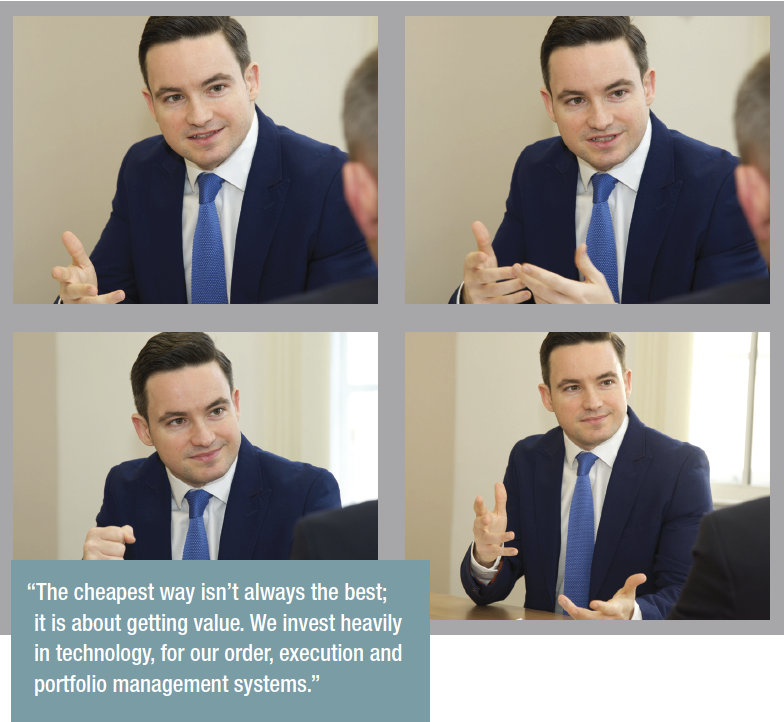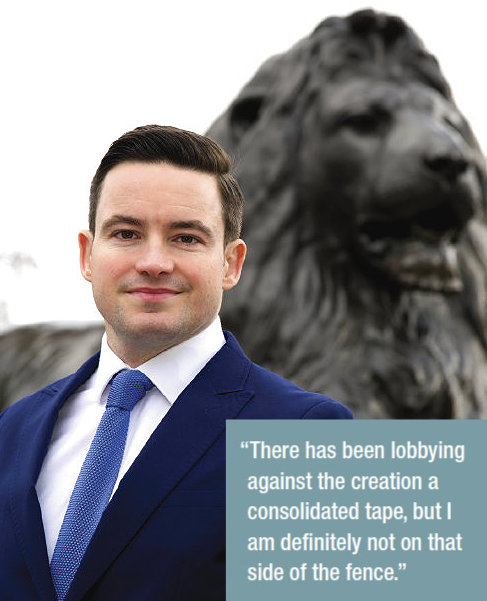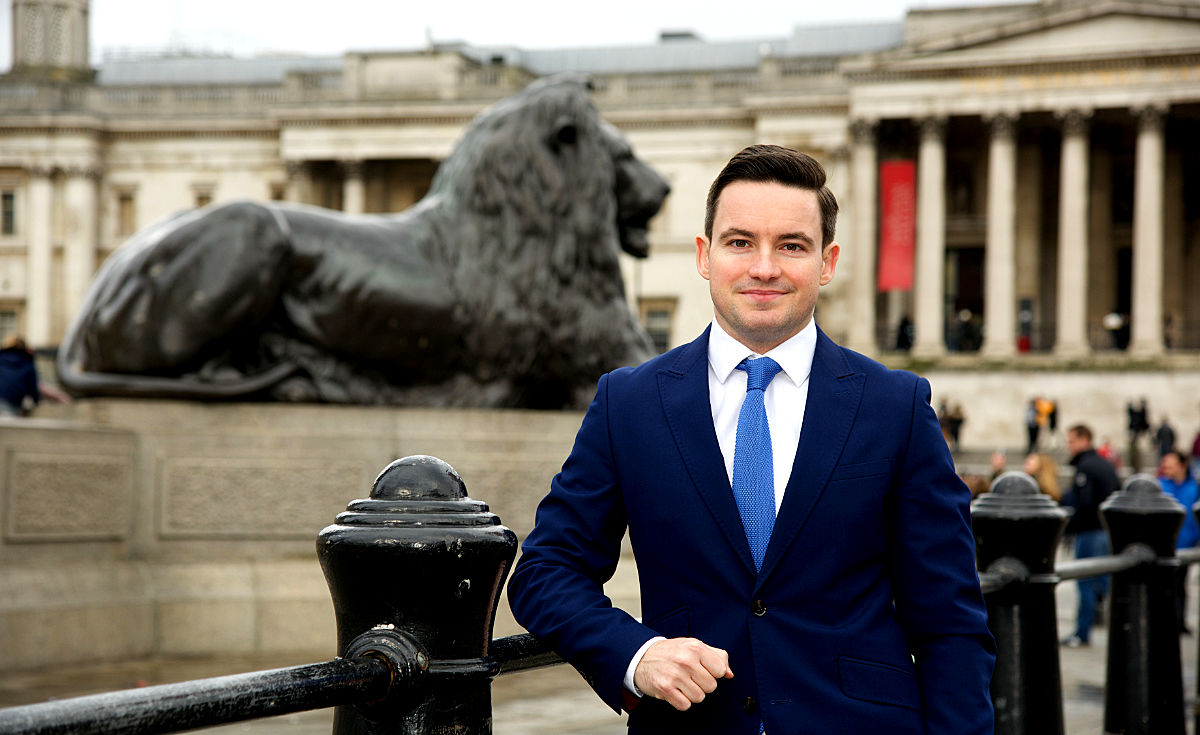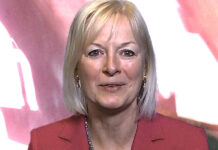Matt McLoughlin, partner and head of trading at Liontrust Asset Management, explains why expanding trading capabilities to match AUM and asset class growth needs careful thought.
Which investment strategies do you trade for and how does that affect your approach to trading?
We have nine fund management teams and they are all very different; we get to trade pretty much everything. We trade globally, across the market cap spectrum and across asset classes too. We have historically had a large equity skew, but we have very large and growing fixed income offerings as well, with two separate bond teams. We recently acquired Neptune Investment Management which added a global equity team capturing more emerging markets strategies.
Our trading team sits in the middle of the fund managers, with the exception of our fixed income fund managers who are based in Edinburgh. I travel there regularly and we are constantly talking to the fund managers about market trends and trading strategies in order to improve order execution. We also have regular meetings on transaction cost analysis to discuss how we can perform better and how fund managers can work with us to achieve best execution. So, we are very integrated into the investment process.
What pressure does your growth in AUM have upon the trading team?
Firstly, it means increased turnover, but we also have increased complexity in the asset classes that we trade. When I joined just under five years ago we were equities only and FX for hedging. Now we also trade credit in both investment grade and high yield, we trade derivatives across credit default swaps (CDS), futures, interest rate swaps (IRS), and now we have got emerging market too. We have a strong sustainable fund management team who strongly believe that those companies that do better for the environment and society should grow at a faster rate, and therefore lead to outperformance in the long term. On the sustainable fixed income side, companies that have strong governance credentials should have strong cash flows and be more stable, leading to better returns over time.
Trading instruments like IRS and CDS is considerably more complex than plain vanilla securities, in terms of the counterparties needed, the impact on the portfolio, margining, etc. Could you describe how that’s affected the trading team?
We had three traders at £4 billion AUM and we had three traders at £19 billion AUM, although we have just added a fourth, Xavier Leopold, who joined us from State Street in February. The way we managed to increase turnover, and [handle] trading complexities, was by changing processes and leveraging technology to become more efficient and improve trading performance while at the same time not really increasing costs or risk. No easy task. The keys have been training, processes and leveraging technology.
As well as having many years of equity trading experience, I was a junior credit fund manager at the start of my career, so I already had credit knowledge. Martin Hendry on my desk was a transition fund manager previously at Legal and General and he traded credit himself, while Matt Orchard is extremely experienced in FX and the operational process, so we have a diversified knowledge base across the team. It’s a complementary team skillset-wise and I thought about that when hiring firstly Martin and then Xavier, who now adds more derivative and programming knowledge to our desk.

Buy-side desks have historically used tools and services that are packaged by banks or providers; is there a risk that an expanding desk tries to minimise costs by using these tools?
The cheapest way isn’t always the best; it is about getting value. We invest heavily in technology, for our order, execution and portfolio management systems (O/E/PMSs). We use Eze for our OMS and EMS in equities, Tradeweb and MarketAxess for fixed income and 360T for FX. We are conscious that with growth there is the temptation to hire and invest in order to build out over-capacity. However, if you ever reach a point where you are no longer growing, you would have to cut the workforce and maybe some of systems. So, you need to invest intelligently rather than just throw money at the problem.
At a time when we experienced both growth and an increase in the complexity in the types of asset classes we covered it was also at a time where we had the biggest regulatory overhaul – MiFID II – in a decade. So, we put in a lot of hard work to understand the changes that were coming, how they affected the industry as a whole, how they affected our funds and how we could best benefit from them to find liquidity and improve trading performance, in order to add value for our clients.
In the survey in this issue we found that there are on average five platform GUIs on a fixed income trader’s desktop, including an EMS/OMS; do you feel the pressure on screen real estate?
There is no perfect OMS or EMS otherwise everyone would be on it. But you have got to streamline your trading desk; a tool can be amazing in one area of the market but if we don’t need it, we shouldn’t have it. We try and get the best of breed for what we need, not necessarily the best that’s out there for each specific security type, because it could cost you a fortune, be inefficient and uneconomical. It goes back to getting value for the investment.

How would you characterise the markets overall this year across assets?
We are still early in the year, and it’s difficult to generalise across all asset classes. However, the ability to be able to find liquidity in all of the asset classes remains vital and it’s one of the main focuses of nearly every asset manager. Of course, there is a cost to liquidity and it’s up to us whether we want to pay it or not. Finding liquidity in these markets is vital to managing our processes and it’s also vital to clients. Over the last year liquidity has become key for clients. Nearly all of the client queries that come across my desk are about finding liquidity. It’s another area that we add value in by explaining how we source liquidity through utilising certain parts of the market structure and through our key counterparty relationships.
A standard client question is ‘how long would it take to liquidate a fund being 20% of average daily volume.’ The further down the market cap spectrum you go, the less accurate the answer to that question will be. For clients, especially investors in the smaller and mid cap areas, we explain that the answers to the questions they ask may not reflect the liquidity that is available in reality.
They need to understand how we are getting that liquidity. In reality, we would never trade being 20 per cent of volume in a large cap, let alone a small cap, as we would have too much market impact. But equally you could also execute a 12,000 per cent of average daily volume trade in one go, as we regularly do. Articulating and explaining this to clients is another area where we can add value.
A lot of money has been waiting on the sidelines for a while, so every time I see volatility increase and markets drop, the market seems to see it as an opportunity to put money to work. Those opportunities don’t last as long as they used to in my opinion. If banks have a bond on their book then they will sell it to you, but if not, it’s very unlikely that they’ll want to go short. That means it is getting harder to invest the cash we are getting in at decent levels.
What’s your perspective on execution quality and evidencing it, given the liquidity picture?
Although best execution is not just about getting the best price, it obviously plays a large part and we therefore pay a lot of attention to our transaction cost analysis (TCA) data. We also focus on venue analysis, which we feel is very important in feeding back into improving overall long-term trading performance. Going back to the subject of liquidity, it’s a factor that is often not taken into account when judging trading performance. Being able to source it and execute the trade to reflect the fund manager’s investment decision and capture alpha is vital. Finding good quality liquidity and being able to get the trade done is not taken into account in TCA. Our TCA data is generally very good, but I don’t particularly mind if my TCA doesn’t always look the best, if I have been able to get liquidity we otherwise wouldn’t have been able to get. If the funds and therefore our clients are benefiting, I will ‘take one for the team’ on the TCA front. It’s a factor that is harder to evidence and measure quantitatively.
Regulations stipulate that we have to attribute a transaction cost to each fund and investors take this data into account when making investment decisions. They will be different from one fund to another for multiple justifiable reasons, varying from differing market cap exposures to more volatile market environments in a particular sector, for example.
There aren’t that many data points for investors to look at when selecting funds. Performance, fees and transaction costs. They can make the decision based on those three numbers, but there is so much information behind them that might not be obvious or fully understood.

How is data scarcity affecting performance and measurement?
We use TCA to judge how broker algos are performing and how efficient their smart order routers are, which is actually more important than the algos that sit on top in my opinion. Venue analysis remains vital at the next level down and is something we pay a lot of attention to.
We can’t talk about data without mentioning the potential consolidated tape. I want a consolidated tape because I think we are missing a lot of information. There are a number of ways to build it. Some people want immediate, nano- or micro-second data feeds, but that’s not necessary in my opinion. A post trade, T+1 or longer, for example, consolidated tape would be very useful for a number of reasons. It would be useful for liquidity management, both for us and for our clients. It would help TCA, venue analysis, best execution analysis and future liquidity source planning.
There seems to be a push from those selling the data to not want it so readily available. There has been lobbying against the creation a consolidated tape, but I am definitely not on that side of the fence.
In the US firms like PIMCO have been positive on longer delays to publication on TRACE while others such as AQR have been against greater delays…
I get that. Post-trade is fine for me, I don’t need it in the next hour or even the next day because people – especially banks and brokers that are making markets – could be reluctant to trade in the sizes and prices they do now. If everyone can see exactly what is going through immediately, that could make liquidity dry up, particularly in the credit market. I recognise that transparency just for the sake of it isn’t a good thing, that too much is not beneficial and could harm some types of liquidity provision. So, although I am for the creation of a consolidated tape I do think that there needs to be a lot of thought around the timing of data releases.
Which elements of market structure are most challenging across asset classes?
I am relatively comfortable with current market structure in Europe at the moment. However, there is no valid reason in this day and age why we have the longest market trading hours in the world. Reducing European market hours would improve efficient liquidity sourcing, diversity, mental health, family life and attracting and retaining talent in this industry in the future. It’s not just traders whose lives are dictated by market hours, it’s operations, it’s IT support, marketing, sales, analysts among many others.
It’s a sad fact that because we have a baby, my wife and I couldn’t do the same job because it’s impossible to get childcare at 5.00am. It is well beyond the time we need to do something about the lack of diversity in this industry, and in trading in particular and I think making it possible for parents to be able to work more flexible hours, as this change would introduce, would make big steps in the right direction. Of 150 applicants to a recent trading job I hired for, only two CVs were from women, which is ridiculous. We need to do everything we can to try increase that number and although this will not solve the entire issue, it will make a big difference in my opinion. We are in 2020 and we have got the technology to introduce more flexible working practices, but this is being held back due to market hours.
When it comes to liquidity, the chances of me finding a matching block to trade is reduced if liquidity is spread over a longer period than necessary. In the meantime, I have to trade in multiple different venues, with increased market impact before I find the matching block. Therefore, the stock is more likely to be negatively impacted and the underlying client will suffer.
How are the counterparties you deal with in equities and fixed income changing?
On the fixed income side, electronic liquidity providers (ELPs) are offering us liquidity in credit, which is a differentiated source from the usual providers. We interact with Jane Street and others via MarketAxess and Tradeweb for example. It is usually relatively benign flow with minimal market impact, especially when the trades are in smaller sizes, but the prices can be at good levels when it suits both parties. They are not there for every trade, but it’s a useful liquidity source when they are.
When talking about the equity liquidity provided by banks, we interact with banks’ systematic internalisers (SIs) and their central risk books (CRBs) via their high touch desks. I am confident in saying that we are very well-behaved ethically in terms of consuming risk, so we have a good relationship with the sell-side. When it comes to ELP SIs, assessing their value largely comes down to data, but we also work hard to understand the models behind their liquidity provision. I have been pretty comfortable dealing with the majority of them and have found good quality liquidity in decent size, at good prices without having large price impact on the whole.
What is your perspective of the MiFID II review?
I was surprised by the scope of the refit seeing as we are only two years down the line from MiFID II implementation.
There are multiple areas that I think need to be reviewed and I hope that the opinions of market participants are taken into account during the consultancy period. For example, the potential new rules for the reference price waiver, negotiated price waiver and the reduction in periodic auctions, are changes that might do more harm than good. Periodic auctions, for example, are very valuable for finding non-toxic liquidity in below LIS size trades for institutional asset managers like Liontrust. The potential changes to the SI regime for certain securities is another topic that could have a large impact. All of the changes raise the question of where we would actually be able to print all of our business.
Although there are lots of positives for lit and primary venues, there seems to have been a big push to drive even more volume onto them and they can sometimes be some of the more toxic venues to trade on for asset managers. One view seems to be that it increases transparency when in reality the opposite is true. If I interact directly with an ELP SI, for example, I know the size they make markets in, the price improvement I can expect and the post-trade market impact attributable directly to them, and they know that. They are incentivised to trade in a non-predatory manner, provide large size liquidity and offer price improvement in order to get the flow from asset managers. In lit markets, however, there is no incentive to do so, as I have no idea who I am trading against, which means information leakage and market impact can be high, whilst liquidity provision is worse.
What do you think are the quickest wins for a bond trading team today?
All-to-all offerings that some of the MTFs and technology providers have brought out have been additive to liquidity especially when trading smaller size credit (both IG & HY). These orders may still be difficult to trade, but you can open up your liquidity options and find the other side of the trade whilst still minimising market impact.
Whereabouts do you see automation fitting into the bond trading workflows?
Similar to equities, in the liquid stuff. Executing your treasuries, gilts, bunds, smaller size IG credit. Automating that, for example, provides you with more time to deal with the blockier, harder, larger credit trades. It makes you more efficient and it opens up time for you to spend on harder orders.
How does execution quality impact bond portfolios compared to equity portfolios?
It adds a lot of value. There can be very wide spreads in high yield and it can be difficult finding liquidity in large blocks of IG credit. Firstly, getting a good price and capturing as much spread as possible adds to performance, but so does just being able to find liquidity and enabling the investment decision to be implemented in the portfolio in a timely manner so that we capture as much alpha in the trade as possible. So it adds to fund performance on a number of levels. It’s vital when it comes to the transaction cost numbers that we provide to clients upon which they make their investment decisions too. If you are performing well and capturing as much spread as possible, while also capturing liquidity, you can have real impact on how fund performance and costs look.
Biography:
Matt McLoughlin is a partner and head of trading at Liontrust Asset Management, the specialist fund manager with £19 billion assets under management. He manages execution across asset classes. He started his career in the UK government’s economic and finance ministry, HM Treasury, before moving to AIG Investments, where he managed fixed income funds. He then spent six years as a senior trader at hedge fund RAB Capital before moving to Legal & General Investment Management where he traded global equities and derivatives. In 2015 he moved to Liontrust to run the trading desk. Matt is also a director of the Plato Partnership and a member of the UK Investment Association’s Buyside Trading Committee.
©The DESK 2020
©Markets Media Europe 2025






















